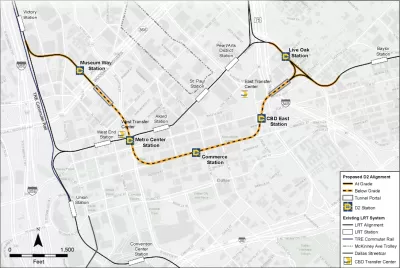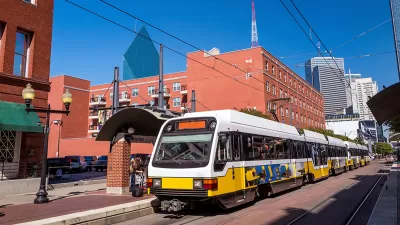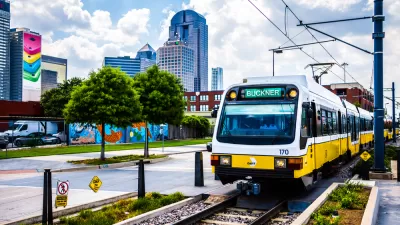The Dallas City Council kept the d2 subway plan on track with a vote this week.

"The Dallas City Council Wednesday unanimously approved to continue [sic] with the building of a second light rail alignment going through downtown Dallas, also known as D2," reports Jake Harris.
"The city council also said it would support DART in obtaining a Federal Transit Authority (FTA) grant to help fund the project. Right now, the cost estimate for the subway and light rails is $1.7 billion, with up to 50% of that number able to be funded with a federal grant," adds Harris.
The D2 project has been in the works in Dallas since 2007, and a key part of Dallas Area Rapid Transit's capital investment plans since 2017. "The planned route would include three subway stations and two above-ground stations from Victory Park to Deep Ellum, with service on the green and orange lines."
A separate article by Matt Goodman, written just before the council vote, details more of what the city would be gaining with the addition of a subway. "The subway would double capacity while giving the light rail system a relief valve in the event of a derailment or some other disruption, as the current system bottlenecks on the single rail line through downtown," according to Goodman.
Goodman also details more of the financial challenges facing the project. "DART will need $1.7 billion total, and the feds will pay for only half of it, which means it has to spend a lot of money to get those federal dollars." The decision to build the route as a subway doubled the cost of the project.
With City Council approval, the project could start construction as soon as 2022, and could open to the public in 2028.
FULL STORY: Today the Dallas City Council Decides if It Wants a Downtown Subway

Trump Administration Could Effectively End Housing Voucher Program
Federal officials are eyeing major cuts to the Section 8 program that helps millions of low-income households pay rent.

Planetizen Federal Action Tracker
A weekly monitor of how Trump’s orders and actions are impacting planners and planning in America.

Ken Jennings Launches Transit Web Series
The Jeopardy champ wants you to ride public transit.

Crime Continues to Drop on Philly, San Francisco Transit Systems
SEPTA and BART both saw significant declines in violent crime in the first quarter of 2025.

How South LA Green Spaces Power Community Health and Hope
Green spaces like South L.A. Wetlands Park are helping South Los Angeles residents promote healthy lifestyles, build community, and advocate for improvements that reflect local needs in historically underserved neighborhoods.

Sacramento Plans ‘Quick-Build’ Road Safety Projects
The city wants to accelerate small-scale safety improvements that use low-cost equipment to make an impact at dangerous intersections.
Urban Design for Planners 1: Software Tools
This six-course series explores essential urban design concepts using open source software and equips planners with the tools they need to participate fully in the urban design process.
Planning for Universal Design
Learn the tools for implementing Universal Design in planning regulations.
Heyer Gruel & Associates PA
Ada County Highway District
Institute for Housing and Urban Development Studies (IHS)
City of Grandview
Harvard GSD Executive Education
Toledo-Lucas County Plan Commissions
Salt Lake City
NYU Wagner Graduate School of Public Service





























